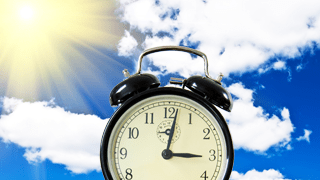
Solatube skylights are just what they sound like – skylights that feature a tube design aimed at gathering sunlight from a small opening in your roof and then dispersing it into a wider area in your room by using a specially-designed reflective tube and diffuser. Their design enables them to fit in locations where a traditional skylight would be too big, and it also means installation costs can be significantly lower since there’s no need to cut through rafters or perform other structural modifications. Plus, the special reflective design means that even on low-light days, a Solatube skylight can provide you with the natural sunlight you crave all year long, from the bright days of summer to the grey depths of winter. In fact, Solatube Skylights are so versatile they can be installed just about anywhere, making them the ideal, easy upgrade for your home or business.
While you’re pondering where to have your Solatube installed, here are a few interesting facts about the history of Daylight Savings Time in Australia to ponder, too. Use them to amaze your co-workers with your astounding knowledge of obscure trivia:
• New Zealand entomologist, George Vernon Hudson, first proposed the idea of Daylight Savings Time (DST). Working shift work, Hudson found the after-work daylight hours were ideal for collecting specimens. In 1895, he proposed a two-hour savings shift rather than the one-hour shift currently in use. Although his contribution to DST is largely overlooked today, you can still pay your respects by visiting the Museum of New Zealand Te Papa Tongarewa to view his collection of native insects, the largest collection in New Zealand.
• DST was first adopted in Australia during World War I, when all the states observed it. When the war ended, DST was abandoned until the beginning of World War II, when it was reinstated, again only for the duration of the war. Today, although most areas in Australia observe DST, it’s still a controversial idea in many cities and states.
• DST began earlier than normal in 2000 and 2006 to accommodate the 2000 Summer Olympics in Sydney and the 2006 Commonwealth Games in Melbourne.
So when this Easter Sunday rolls around, don’t forget: Turn your clocks back one hour, set aside some time to enjoy the extra hour of sleep, and spend those chocolate-egg eating hours deciding just where to add your Solatube skylight for better, brighter days this winter.

